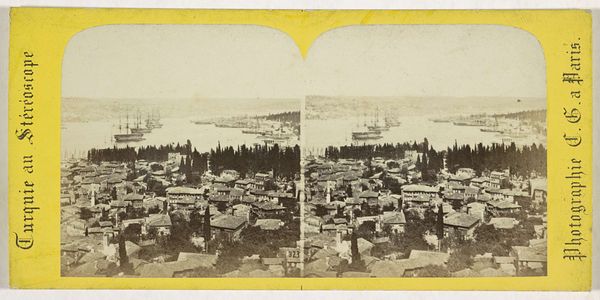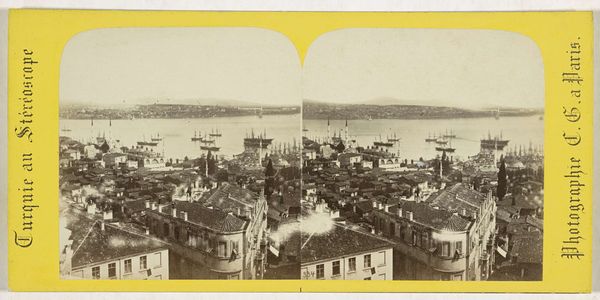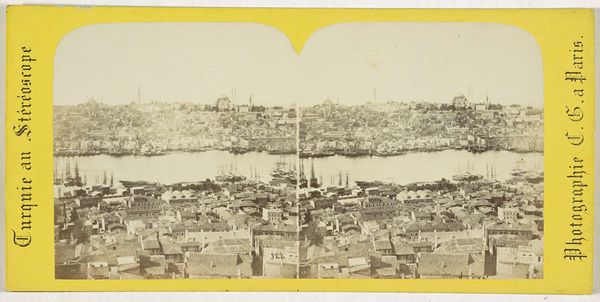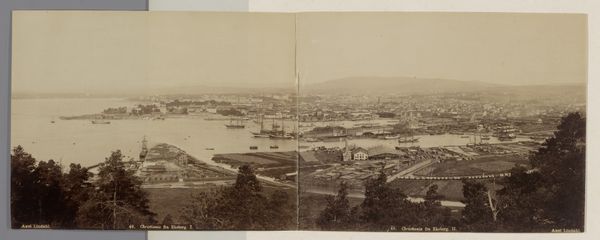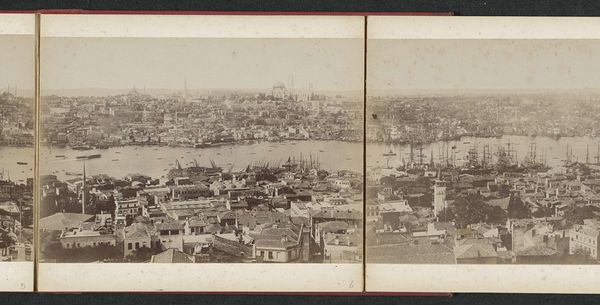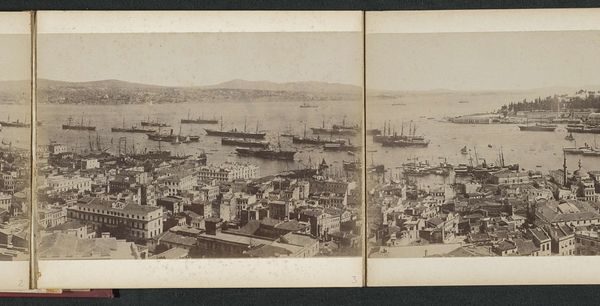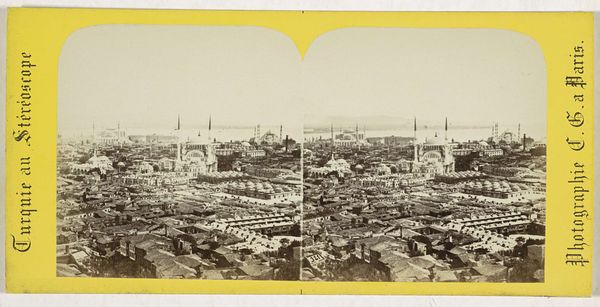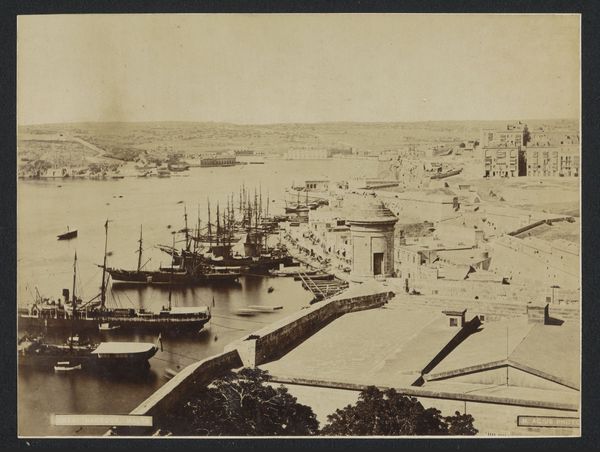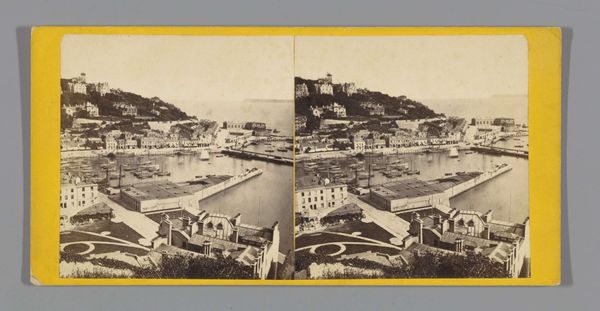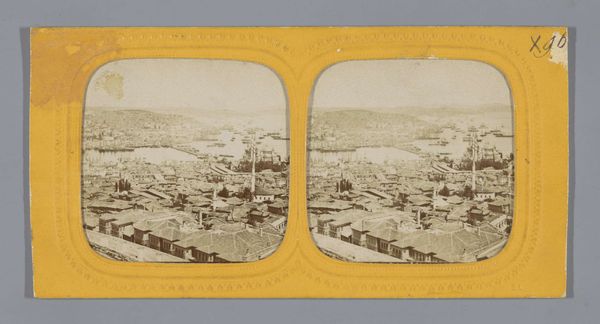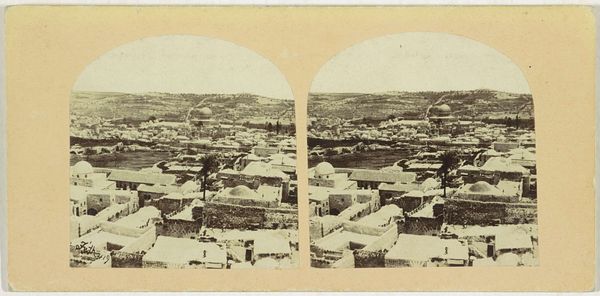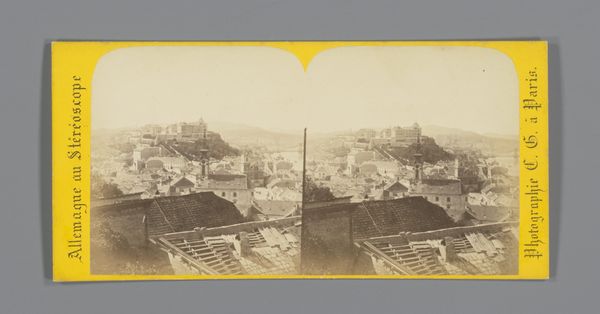
print, daguerreotype, photography
# print
#
daguerreotype
#
photography
#
coloured pencil
#
orientalism
#
cityscape
Dimensions: height 84 mm, width 173 mm
Copyright: Rijks Museum: Open Domain
Curator: What a wonderfully dense and intricate composition. There's almost a sense of organized chaos emanating from the photograph. Editor: Indeed. What we're viewing is a stereoscopic print titled "Gezicht op Istanboel," or "View of Istanbul," created sometime between 1861 and 1870 by Charles Gaudin. This work intertwines the emerging technology of photography with the popular taste for Orientalism in the mid-19th century. Curator: Right, the "Orient," viewed and mediated through a Western lens. Gaudin's vantage point seems carefully chosen, an elevated perspective offering a panoramic sweep. We see layers of buildings cascading toward the water, a swarm of details softened by the photographic process of the time. How might the intended viewer consume this kind of image, in your view? Editor: The stereoscopic format is key. It allowed viewers, primarily in Europe and North America, to experience a simulacrum of "being there." These images offered a readily consumable and portable version of distant lands and cultures. This allowed for the reinforcement of power dynamics, casting the West as the viewing subject and the "Orient" as the object of their gaze. Curator: Absolutely, and I find myself reflecting on the very act of documenting a city in this manner. It mirrors broader imperialist tendencies to categorize and map territories and societies that were often radically different. What does the "Gezicht" itself tell us about this power dynamic? What's being included or excluded from the frame, consciously or not? Editor: That's a vital question. What stories are silenced through the selective choices embedded within the composition? The photograph captures this booming, important Ottoman city, focusing on its architectural fabric and trade activities, while it obscures everyday life for regular people living here. The photo is almost devoid of individuals within its panorama. It seems Gaudin focused less on the social experience and much more on an external consumption of a picturesque setting. Curator: It also reveals the romanticism prevalent during that period. Gaudin creates an almost dreamlike world. Editor: True, that softens a much more complicated political situation. The rise and fall of empires, cross-cultural exchanges... This photography is one part marketing, one part anthropology. Curator: Ultimately, the image asks us to look beyond its immediate beauty. It invites reflection on both the power of photographic representation and the socio-political narratives embedded in the historical depictions of Istanbul. Editor: Indeed. It prompts an awareness of our own position as viewers, urging a critical assessment of how we inherit and interpret such images.
Comments
No comments
Be the first to comment and join the conversation on the ultimate creative platform.
